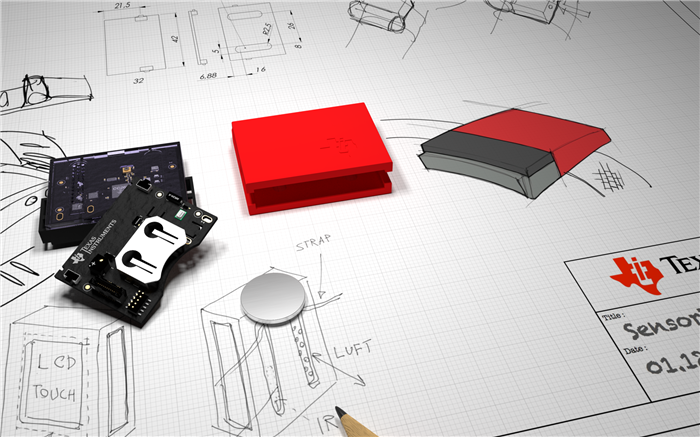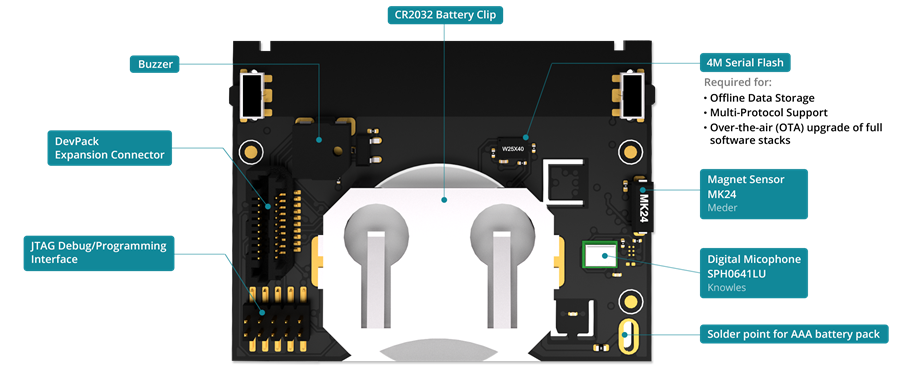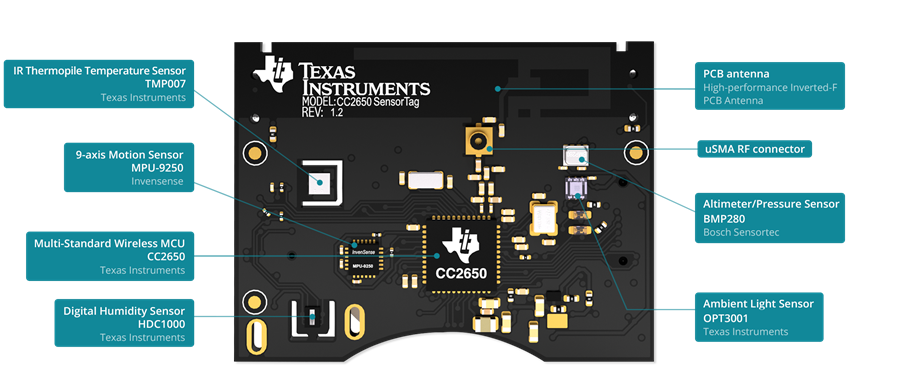SSZTCN4 june 2015 CC2650
Why the IoT Is Driving Innovation
For the last decade, development of cool hardware has been extremely expensive, only a few companies in the world can afford the development of a smartphone or tablet. With the Internet of Things (IoT) this is changing: A combination of low-cost development tools, free compilers, the introduction of 3D printers and easy access to crowd funding organizations have allowed anyone with a great product idea the ability to bring their products to the market.
The key to enable these new projects is to provide tools that help you get started developing right away. Low-cost tools are required to keep the initial investment low.

When designing a development kit, we work with leading industry designers to achieve the following goals:
-
Intuitive cloud interface: To demonstrate that connecting electronics to the cloud is easy
-
Low cost: The price of the development tools should not block creative ideas
-
Small size: (but still easy to handle) with quality look and feel. Let’s you demo a real product instead of a green bare PCB
-
Expandable: Makes it easy to turn it into a full development platform with debugger and compiler
-
3D printable: Once you have made your first prototype, you can modify and print you own product
-
Open design files: Available hardware, software and 3D print files to allow you to use it as a starting point for your own designs
Combining Really Low Power with IoT
So, why did we integrate 10 sensors into the new SensorTag?
Our answer is because we can! And because it is easier for anyone that would like to copy our design to remove sensors than to add new ones. The 10 low-power MEMS sensors are powered from a single coin cell battery. As the design is based on the SimpleLink multi-standard CC2650, the lowest power wireless microcontroller (MCU) on the market, we have achieved a total sleep mode current consumption of 4uA for the MCU with all 10 sensors.


Expanding the SensorTag to Fit Your Application
Getting a SensorTag connected to the cloud out-of-the-box is a good start, but where do you go from there?
We have made the SensorTag expandable with an ecosystem of DevPack plug-in modules for a variety of applications:
Debug DevPack is the easiest to use and lowest cost debugging solution on the market. Simply plug it on top of the SensorTag, connect a micro USB cable and compile your SensorTag project with the TI Cloud tools on dev.ti.com or download the full Code Composer Studio™ integrated development environment (IDE) to get full debugging capabilities. The Debug DevPack also includes a footprint for three Grove connectors from Seeed Studios in case you want to enable any of their 100s of Grove sensors and actuators.

Additionally, we have announced application specific DevPacks. Do you want to develop a smartwatch with one-year battery lifetime? Or a weather station that combines outdoor temperature, humidity and barometric air pressure combined with weather forecast from the web? Use the Display (Watch) DevPack for your prototypes.
For LED lighting and home automation applications, we have developed the multi-color LED Audio DevPack with 4 high power LEDs and audio amplifier. They can of course be controlled from your smartphone! Or from the cloud!
Connecting the SensorTag to the Cloud
Many companies announce end-to-end IoT solutions. We do not attempt to control the entire value chain. Our simple goal is to make the best low-power hardware for connecting wirelessly to the cloud and keep it open for any IoT cloud service to use. The SensorTag is currently supported by the leading IoT cloud providers including IBM Bluemix IoT Foundation and Temboo.
We are inviting everyone to use the SensorTag to explore the IoT. We look forward to sharing new and innovative use-cases for the SensorTag and DevPacks in the coming months. Share your ideas in the comment field or on Twitter or Instagram with #SensorTag!